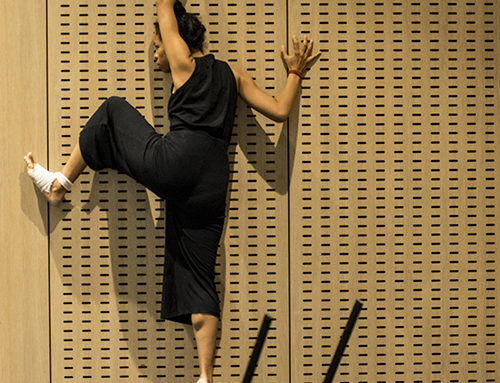Everybody wants to know how to prepare for an efficient day. The first thing to consider, especially when you do different activities, is to pick ahead the time slots for each type of work.

Artist: Lucile Rimbert – Photographer: Romain Sanchez
Creating a schedule
Before anything else we recommend that you choose the three most important tasks you want to achieve to be satisfied with your work at the end of the day: it will give you more visibility on how to create your schedule.
First, place the most important or time-consuming tasks, favouring the morning when it’s usually easier to focus, then insert easier or faster tasks. As the Jar of Rocks analogy explains, if you begin to plan with your small tasks (filling the jar with pebbles), it will be difficult to place the time-consuming tasks (the rocks) because you won’t have the necessary space.
Anticipate real breaks in the course of your workday, for instance by putting alarms, as suggested by the Pomodoro Technique here or here.
Always foresee more time than you think: the transition from one task to another can take more time, you can be interrupted, an urgent email can arrive, and so on.
If an objective or a task seems insurmountable to you or takes too much time, divide it in smaller tasks which will appear more practical and will be easier to place in your schedule. Our brains prefers an instant reward, that’s why we will tackle first quick and easy tasks and postpone tasks that doesn’t belong to this pattern. Dividing a task in clear and precise tasks allows you to put yourself in the best disposition to carry out the work.
Example: Recruit an employee = Create a job description + Write an advertisement + Publish the advertisement + Read the CVs + Interview the candidates + Choose an employee
The to-do list
The to-do list is an essential tool for your organisation. You can write it wherever you prefer: on a notepad, your smartphone, in your bullet journal, via an app, etc. Each person has its own system. The principal point is that the list have to be accessible all the time, because it will allow you to note down each new idea cutting off your reflection, by getting it out of your mind. The name of your task must beclearat a glance: it must not be longer than a sentence (this is not the place for details) and must begin by a verb.
For instance: Newsletter => Write/Proofread/Send/Monitor the March newsletter
Match a delivery date and a time scale to execute your tasks so you can have a more precise idea when you are scheduling. You can also link it to a field or use a colour coding.
Tasks examples:
Send the newsletter of my next show – 20 minutes – 03/02 – Communication
Calculate the costume budget – 2h – 14/02 – Budget
Prepare the meeting with the cultural centre – 1h – 25/01 – Outreach
Stay focused
You can switch off unneeded notifications of your smartphone and computer, or even put them in silent or do not disturb mode to focus on a more complex task. Don’t forget to keep your to-do list close to put down everything that could be a nuisance to your reflexion. Set up in a quiet place with the least distractions and interruptions possible.
The most important thing is to keep in mind that everyone function differently and that you have to try different techniques to find your rhythm and your organisation.



